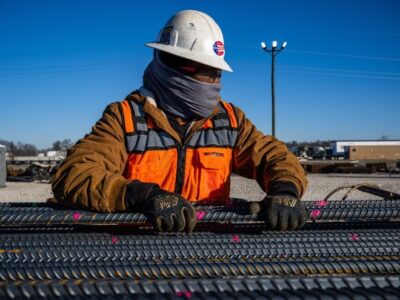Although the United States is home to wide stretches of farmland and empty spaces, 86% of its 333 million people — 287 million Americans — live in non-rural areas. According to the Rural Health Information Hub, the rural population totals only about 46 million people in contrast.
That doesn’t sound like a lot compared with city and town dwellers. But if rural America were its own country, it would be the 33rd most populous in the world, just behind Spain and ahead of Argentina.
These twin dynamics — a small percentage of the overall U.S. population but still a large number of people — have created both challenges and opportunities for America’s rural economy. A new partnership between the U.S. Department of Agriculture (USDA) and the Small Business Administration (SBA) aims to address this reality by creating jobs and expanding access to new and better market opportunities for rural Americans.

Photo Courtesy Rural.gov
The partnership, announced on Nov. 20, involves a memorandum of understanding (MOU) in which the USDA and SBA agree to increase their investments in small and underserved communities. The idea is to help grow the rural economy and create good-paying jobs.
As part of the MOU, both agencies committed to expanding opportunities for rural technical assistance providers, entrepreneurs, cooperatives, and small business owners.
To help accomplish their mission, the USDA and SBA will provide resources to help rural businesses compete in domestic and international markets.
The partnership is part of a larger White House effort to rebuild the U.S. economy from the “bottom-up and middle out,” Xochitl Torres Small, USDA deputy secretary, said in a press release.

Photo Courtesy Rural.gov
“At USDA, we are redoubling our commitment to drive economic security and prosperity for people in rural America so they can find opportunities to succeed right in the places they call home,” Torres Small continued. “Strengthening our collaboration with the SBA helps us expand these opportunities for people to build brighter futures for generations to come.”
The agencies will work together to do the following:
- Provide joint training, technical assistance, and mentorship opportunities for rural small business owners and entrepreneurs.
- Help agricultural producers and small businesses identify ways to export their products worldwide.
- Expand the collaboration between the USDA’s Rural Partners Network and SBA’s Resource Partners Network.
- Cross-promote programs that support rural businesses, socially disadvantaged communities, and more.
The initiative comes at a time of rapid transition in rural America. In a 2022 report titled “Rural America at a Glance,” the USDA reported a slight decline in the rural population during the 2010s while metro areas grew by nearly 9% during the same period. The rural population also became older as more young people left for urban areas.
According to the USDA, the overall decline in rural population growth and increase in average age has impacted the “makeup and availability of the rural labor force.”
In 2021, people 65 and older made up more than 20% of the nonmetropolitan population for the first time in U.S. census history.
At the same time, the report said that rural America “has become more economically diverse,” with more jobs in health care, hospitality, and other service industries. The rural workforce has also become more ethnically diverse amid a rise in Black, Asian, and Hispanic residents.

Photo Courtesy Rural.gov
One of the goals of the USDA-SBA partnership is to ensure that changing rural communities have the tools necessary to compete in the modern economy.
“Rural small businesses strengthen local economies — creating jobs and serving communities,” Isabel Casillas Guzman, SBA administrator, said in a press release. “SBA’s partnership with USDA will build upon the [current] administration’s commitment to investing in underserved rural Americans and providing the needed resources to help them start and grow their businesses to advance our economy and global competitiveness.





